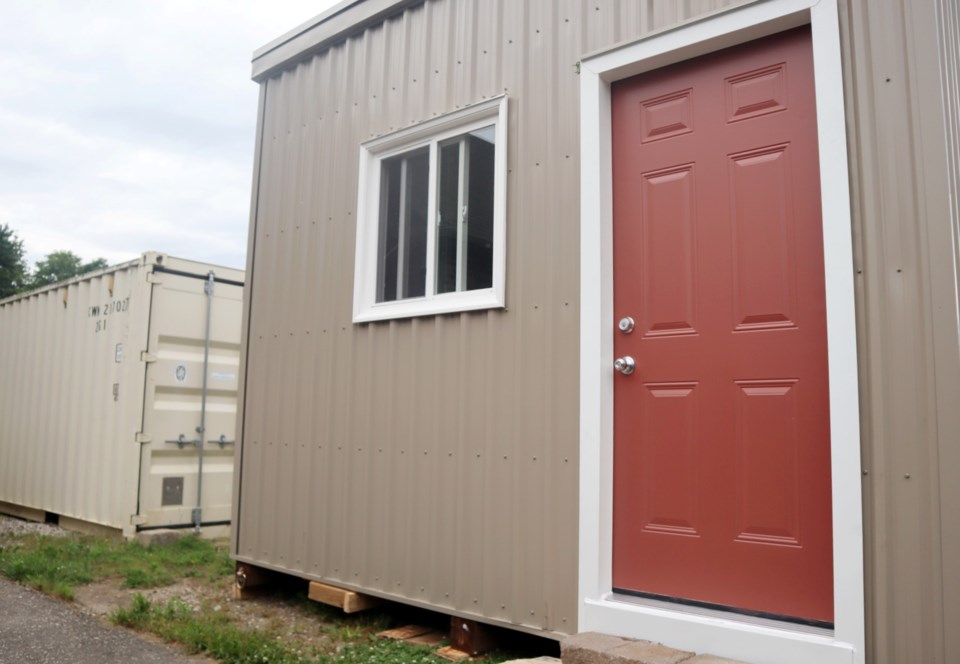The group pushing for the creation of a tiny homes community in Guelph believes there is a "golden opportunity" at hand, thanks to announced new provincial funding.
Much has happened since the Guelph Tiny Homes Coalition formed early in the year, like the public space use bylaw and the removal of the encampment at St. George’s Square, it continues to advocate for the creation of temporary homes for people experiencing homelessness. Land is still being sought to secure a site for the project and until it does, there won’t be fundraising, said Mike Marcolongo, coalition member.
But with political leadership and provincial support, he believes it could become a reality by next spring.
There is $20 million of funding specifically for expanding shelter capacity and adding semi-permanent structures, like tiny modular units as an example, with the provincial government tabling Bill 242, the Safer Municipalities Act last week.
“Hopefully we can take advantage of this golden opportunity, given the fact that encampments continues to be a concern and an issue for our community,” said Marcolongo.
Service managers who get the funding will have to report to the province on how many people moved from encampments to the new accommodations, explained a provincial news release.
The County of Wellington has until Jan. 3 to submit an application for funding under the encampment response initiative, said Dave Purdy, director of housing services at the County of Wellington.
Conversations quickly began between the county and the City of Guelph once the funding was announced. The good part of the application is it can submit multiple business cases for it.
All options are on the table, said Purdy, when asked if tiny homes could be an option. “We don’t want to preclude by not considering what type of investment and solutions would be beneficial for our community. That is definitely part of the conversation,” he said.
He couldn’t comment if a decision has been made on what the submissions and projects could be.
Part of the challenge with the tight deadline is identifying potential project proposals and pulling necessary information to fit within the provincial template.
As for the amount of funding, is it enough? "No, we all would say that, and everybody knows that, but it's dollars again, into the larger pocket of homeless prevention and housing and any further investment is always welcome," said Purdy.
“We’re competing with other communities for that limited funding,” said Marcolongo.
The coalition received support "in principle" from city council back in July. Staff were directed to work with the County of Wellington to see if the tiny homes model could fit within its housing options. A report is due back at council in the first quarter of the year. The coalition is looking for direction on this and hopes to work with city staff once the report is back.
With the provincial funding it “... puts the county in a difficult position because do they just keep expanding the shelter system, or do they say we need to try something different here?” said Marcolongo.
He is appreciative of the support and continuous conversations he’s had with Mayor Cam Guthrie and Coun. Linda Busuttill on the project. They both sit on the County of Wellington’s social services committee.
Nearly 100 people have signed up to volunteer with the project. Marcolongo is humbled by the support its received so far and shared the community's amount of willingness to work on solutions
Since the encampment at St. George’s Square was removed “we're still seeing encampments despite the Norfolk Manor building opening up, despite new spaces coming available,” he said.
With the public space use bylaw he believes it did solve the “immediate downtown crisis” but it did displace people throughout the community and the issue isn’t solved.
He noted the shelter system does good things but can be a limited option for some people. “Why do we keep putting all our eggs in one basket and expect to see different results? Encampments continue. These are very hard to shelter folks. We need a different model to accommodate them,” said Marcolongo.
The tiny homes model is a temporary solution and would transition people to permanent support, he said.
For the coalition, ideally it would be a housing first solution where people are housed, possessions are secured, people feel a sense of security and then they can work towards treating their substance use issues.
